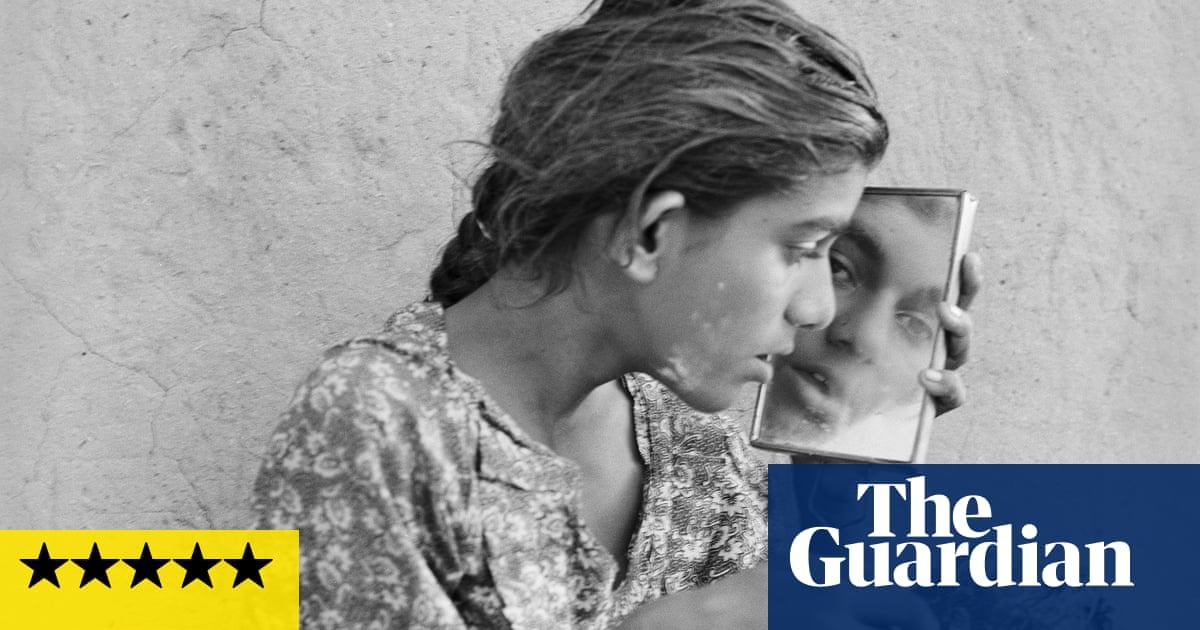
Photo-reportage is said to have begun with a fire – specifically the great fire of Hamburg in 1842. German photographers Hermann Biow and Carl Ferdinand Stelzner hauled their cameras up to the top of a high building to capture the devastation below. The equipment weighed as much they did and the daguerreotype process was too slow to catch the flames in action. But their images of burnt-out buildings were seen around the world: epochal news photography.
Fire is easy to start but historically hard to depict. Painting hardly manages it at all without freezing the flames, as it were. Of course there are exceptions – Turner’s wild watercolours of the Houses of Parliament burning down, dashed off in the scorching heat of the moment from a boat on the Thames – but even the two-dimensional medium of photography has some trouble recording fire’s spectacular speed, spread and volatility. Moving images generally hold the main advantage.
So it is fascinating to see how the 13 photographers shortlisted for the 2021 Prix Pictet handle its theme. The top international prize for photography and sustainability has chosen the fourth element, fire, after running through the previous three. This could hardly seem more timely, given the past year’s chain of devastating blazes, from the Amazonian rainforest to the Dixie fire in California, which torched almost a million acres, and the Australian bushfires growing wilder than ever last month.
There is some documentary reportage here, of the California fires and of a burns hospital in Varanasi, its poverty-stricken patients generally the victims of domestic accidents involving paraffin lamps in India’s rural households. The South African photographer Brent Stirton, who works mainly for Getty, brings a tender eye to these portraits of teenagers whose brown skin flames white with flickering wounds, and of the plastic surgeon who serves the poor there singlehandedly. More than six million Indians are burned every year. The series is titled Burns Capital of the World.
But his colleague Mak Remissa, of the European Pressphoto Agency, turns reportage upside down with his celebrated Left 3 Days series. These nearly monochrome photographs show the aftermath of the Khmer Rouge’s assault on Phnom Penh on 17 April 1975. Everyone was ordered to leave the city, including Remissa’s own family. His photographs show Cambodians desperately trying to find water, first aid or food in the smoking violence. Or so it seems. Close-up, these turn out to be tiny dioramas, the silhouetted figures scissored out of black paper and surrounded with the smoke of burning coconuts.
The restaging amounts to a double commemoration, each poignant scene a photographic image but also an act of homage to the dead – who numbered his relatives. The memory of these atrocities is now fading away, Remissa has said, “like smoke being blown away by the wind”.
Memory is also integral to the Wonder Beirut series by Lebanese artist duo Joana Hadjithomas and Khalil Joreige. Picture-perfect postcards of Beirut – glamorous hotels, innocent pleasure-seekers – are strategically blistered and burned. Buildings melt, seafront bars go up in pockmarked explosions, as if destroyed by real flames.
Which they were, of course, during the Lebanese civil war; though such postcards are still on sale in Beirut, as if nothing ever happened. The artists collected, adapted and re-photographed them for this series. But history has intervened again. Many of their prints were destroyed in the colossal Beirut explosion in 2020.
The more conceptual the work, the further it seems to depart from fire per se. The American artist Lisa Oppenheim doesn’t show flames at all. Her photographs look like magnificent cloudscapes out of Constable or Turner, until you consult the titles and realise these are found photographs newly cropped and solarised.
Man holding large camera photographing a cataclysmic event, possibly a volcano erupting, 1908/2012 shows glorious sun-edged clouds. But the man is gone and so is the eruption. Time and amnesia have intervened. The solarisation is achieved with a simple lit match, diminutive counterpart of the original flames.
The judges, led by Sir David King of the Centre for Climate Repair at Cambridge University, have chosen their shortlist from 300 portfolios. Some, like Oppenheim, are conceptual artists who use photography as material more than medium. Indeed, the most famous artist here is the Swiss-American Christian Marclay, best known for his enthralling 24-hour video The Clock, constructed out of cinematic fragments of characters interacting with clocks and time.
His shortlisted collages are properly alarming, worked up from photographs of burning leaves and fiery outbreaks, plus screaming faces from graphic cartoons – a contrast so abrupt it is as if the collage itself was bursting into flames.
But the winner of 2021’s prize is a photographer of such renown, it hardly needs further enlargement – the American Sally Mann, known for her disquieting monochrome scenes of civil war battlefields, decaying landscapes and her own intimate family life.
Mann has won for lowering, old-fashioned tintypes – positive images made on metal plates – of the Great Dismal Swamp on the border of Virginia and North Carolina, where escaped slaves used to take refuge in the antebellum era. Wildfires have left this place even more desolate, a nightmare of black water, charred trees and bracken. Never averse to melodrama, Mann has shot branches that look like graveyard crosses and added deliberate sears and blemishes to her pictures so that they look even more apocalyptic.
Yet they do not have the vision of upcoming Austrian-Nigerian artist David Uzochukwu’s picture of a young black woman, her hair seeming to smoulder with drifting smoke. The human head as a sign of the future: this is irreducibly subtle – no smoke without fire.
Prix Pictet 2021: Fire is at the Victoria and Albert Museum, London, ends today; virtual tour online












